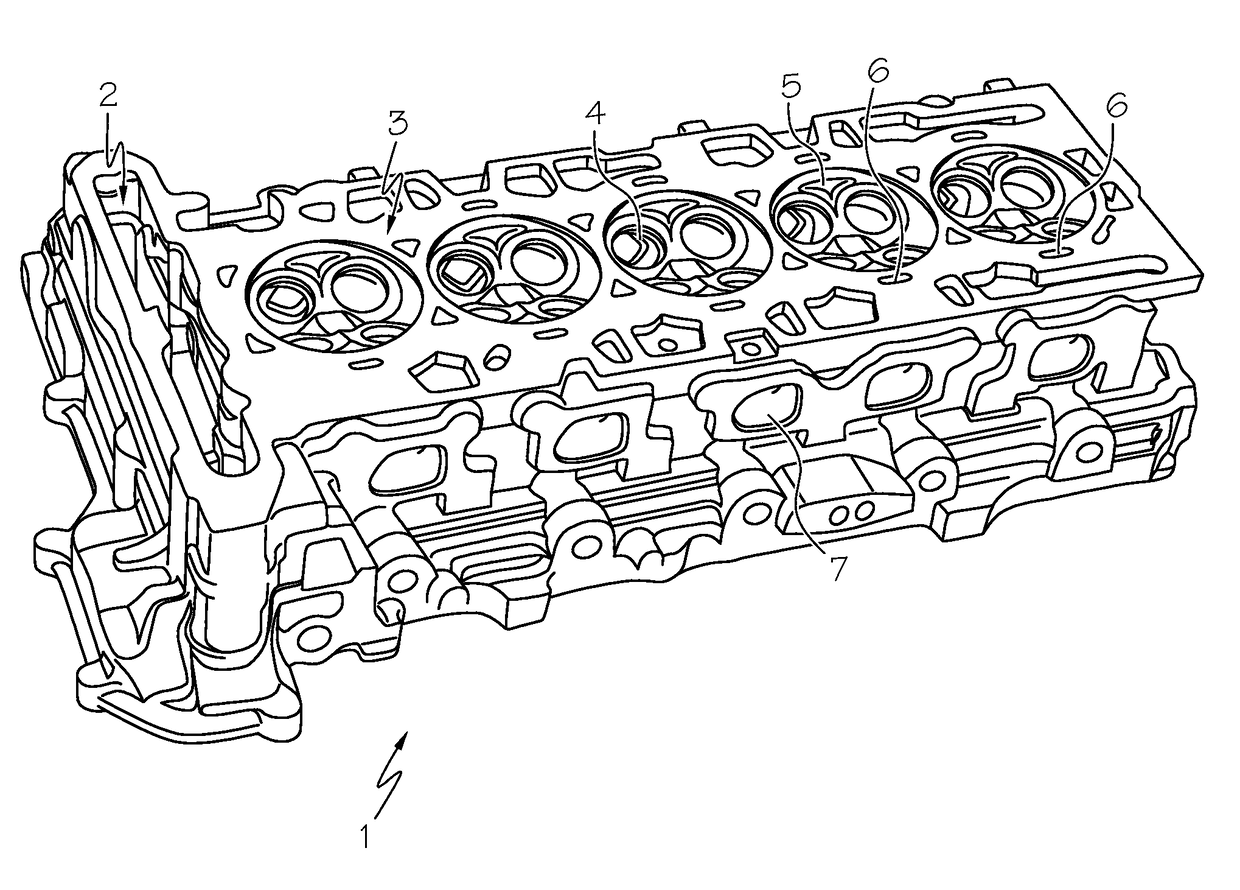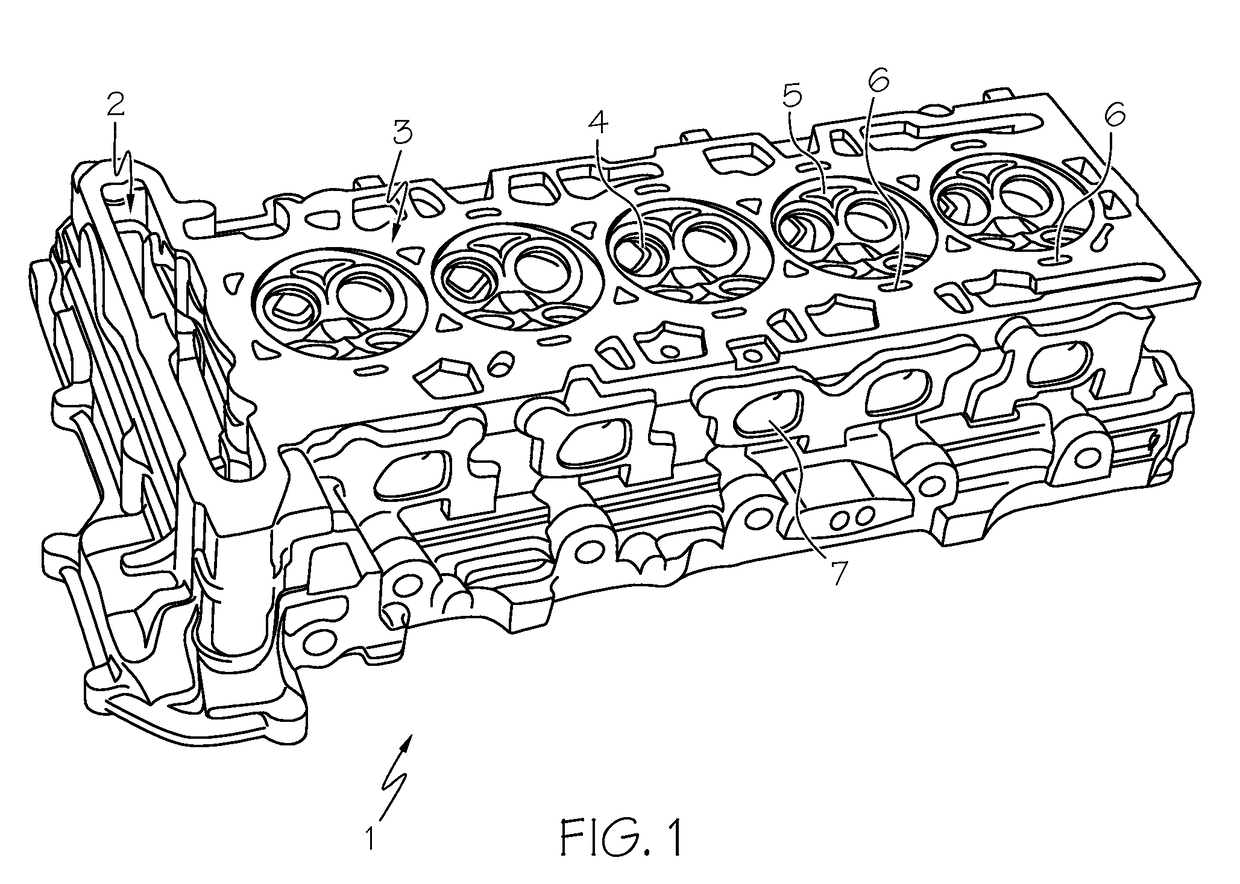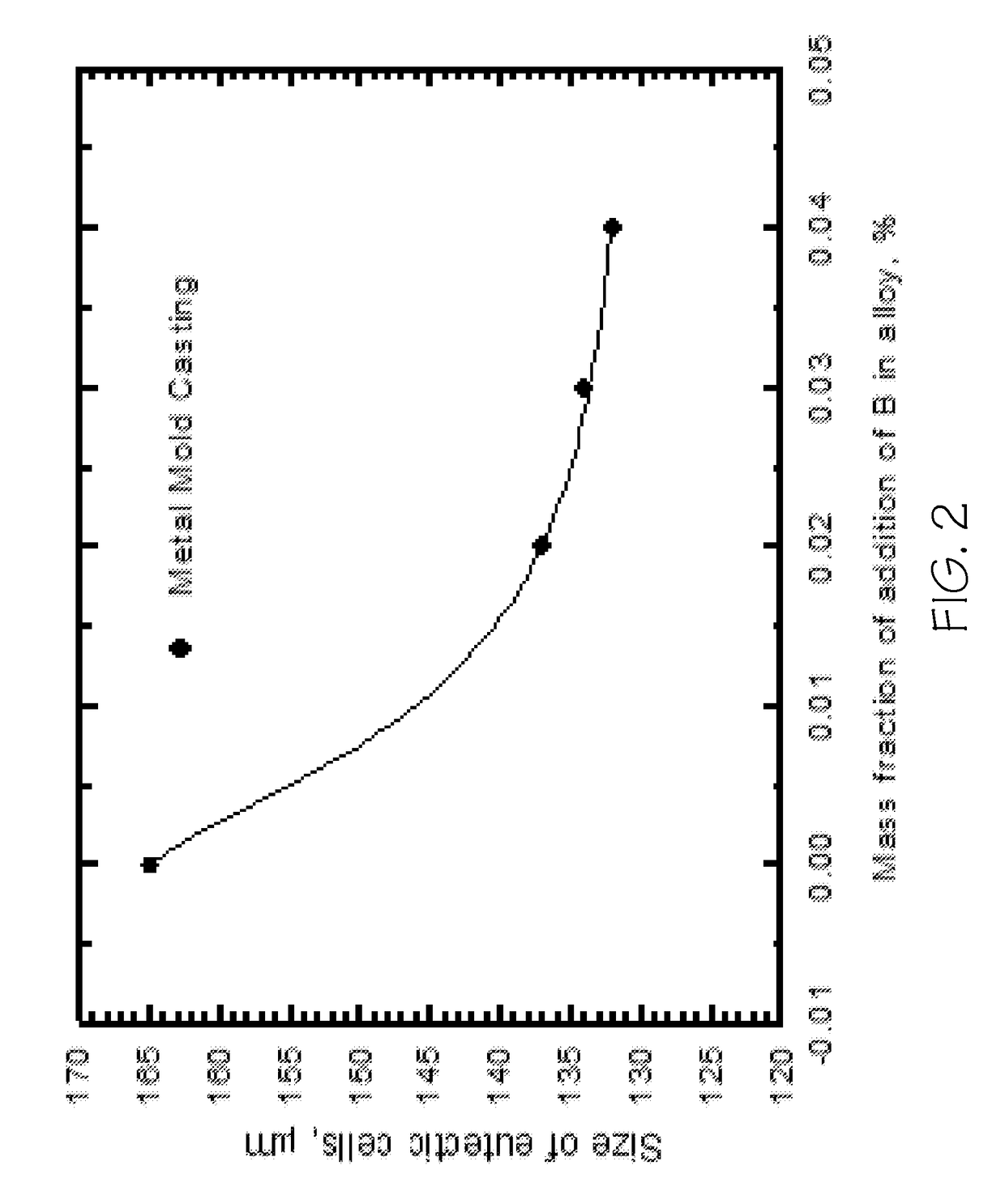Cast aluminum alloy for structural components
a technology of aluminum alloy and structural components, applied in the field of aluminum alloys, can solve the problems of high melting energy consumption, particle reduction significantly reducing machinability, ductility and fracture toughness of materials, and low silicon concentration, and achieve the effect of reducing thermal fatigu
- Summary
- Abstract
- Description
- Claims
- Application Information
AI Technical Summary
Benefits of technology
Problems solved by technology
Method used
Image
Examples
example 1
[0025]A heat of an alloy of the embodiments nominally comprising, in weight percentage, 11.8% Si, 0.33% Mg, 0.2% Fe, 0.034% Sr, and 0.032% B, and balance Al and incidental impurities (Embodiment 1 of the invention) was made by the following steps. The proper amounts of Al-10% Si, Al-50% Si, Al-25% Fe, Al-25% Mn (weight %) master alloys and pure magnesium metal were carefully weighed and melted in a clay-graphite crucible in an electric resistance furnace. Once degassed and cleaned, the melt was treated with an agent to effect eutectic aluminum-silicon phase and / or intermetallic phase modification. A preferred agent to this end comprises Sr and B. The preferred method is to use Al-10% Sr and Al-3% B (weight %) master alloys, added into the melt during the last stages of degassing, provided no halogen material is used. Once processed, the alloy composition and gas content were checked and the alloy melt was gravity poured into metal molds to form at least five test bars having the dim...
example 2
[0031]A heat of an alloy of the embodiments nominally comprising, in weight %, 12.6% Si, 0.3% Mg, 0.18% Fe, 0.045% Sr, and 0.026% B, and balance Al and incidental impurities (Embodiment 2 of the invention) was made by the steps as described above for Example 1. The melt treatment, casting, heat treatment, and tensile testing of the test specimens is the same as described above for Example 1.
[0032]Table 2 sets forth the results of the mechanical property testing where UTS is ultimate tensile strength (MPa) and percent Elongation is the plastic strain at fracture.
[0033]
TABLE 2UTS% ElongationAlloyAverageMinimumAverageMinimumEmbodiment 2As-cast260.4251.48.57.1Embodiment 2T6330.8321.914.212.8A356T62622541.51.2
[0034]With respect to alloys of described embodiments, it is again apparent that the test specimens of the alloy exhibited a better combination of tensile strength and elongation compared to the test specimens of the conventional alloy A356. Moreover, importantly, the test specimens...
example 3
[0035]A heat of an alloy of the embodiments nominally comprising, in weight %, 13.25% Si, 0.25% Mg, 0.19% Fe, 0.048% Sr, and 0.022% B, and balance Al and incidental impurities (Embodiment 3 of the invention) was made by the steps as described above for Example 1. The melt treatment, casting, heat treatment, and tensile testing of the test specimens is the same as described above for Example 1.
[0036]Table 3 sets forth the results of the mechanical property testing where UTS is ultimate tensile strength (MPa) and percent Elongation is the plastic strain at fracture.
[0037]
TABLE 3UTS% ElongationAlloyAverageMinimumAverageMinimumEmbodiment 3As-cast254.7247.28.06.9Embodiment 3T6325.3317.713.511.7A356T62622541.51.2
[0038]With respect to specific embodiments of alloys herein described, it is again apparent that the test specimens of specific alloys exhibited a better combination of tensile strength and elongation compared to the test specimens of the conventional alloy A356. Moreover, importa...
PUM
| Property | Measurement | Unit |
|---|---|---|
| size | aaaaa | aaaaa |
| grain size | aaaaa | aaaaa |
| diameter | aaaaa | aaaaa |
Abstract
Description
Claims
Application Information
 Login to View More
Login to View More - R&D
- Intellectual Property
- Life Sciences
- Materials
- Tech Scout
- Unparalleled Data Quality
- Higher Quality Content
- 60% Fewer Hallucinations
Browse by: Latest US Patents, China's latest patents, Technical Efficacy Thesaurus, Application Domain, Technology Topic, Popular Technical Reports.
© 2025 PatSnap. All rights reserved.Legal|Privacy policy|Modern Slavery Act Transparency Statement|Sitemap|About US| Contact US: help@patsnap.com



